





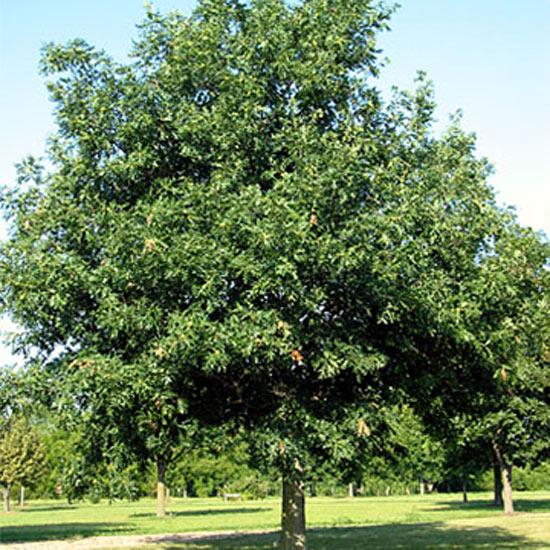 Healthy, mature shade trees can contribute up to $1,500 toward a lot's value.
Healthy, mature shade trees can contribute up to $1,500 toward a lot's value.
When it comes to trees, a decision in haste can lead to a lifetime of regret. Many trees grow more beautiful generation after generation. Others have the potential to create decades of trouble, dropping messy fruit or bothersome sticks. So take your time and select the tree that offers the best combination of qualities you will enjoy.
Begin your selection process by asking: Why do I want a tree? For shade? Privacy? Something to look pretty? Or to block the view of the neighbor's less-than-lovely backyard?
A tree's growth rate also may have a bearing on your choice. The slower growers are hardwoods and tend to live longer. If it's important to establish shade or have flowers relatively quickly, choose a fast-growing tree. Typically, they're smaller, have soft wood, and don't live as long. Scale trees to their surroundings. Use small- or medium-size varieties for smaller houses and yards. On any site, put smaller trees near the house and taller ones farther out in the yard or near its edge.
Trees and shrubs are either deciduous or evergreen. Deciduous trees lose their leaves in the fall and are bare all winter, though the leaves often give a final show of beautiful colors before they drop. Evergreen trees and shrubs retain their foliage year-round. Some, such as southern magnolia, feature broad leaves. Others, such as pines, have needled foliage.
Considering Japanese maples? Learn all about this beautiful tree.
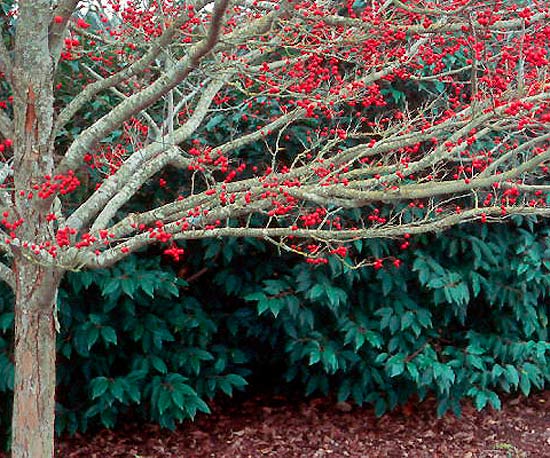 Fruit of the hawthorn.
Fruit of the hawthorn.
Every kind of cultivated tree has assets that suit it for some landscape use. Each also has certain requirements critical to its survival in the yard. Some are more cold-hardy than others, so check their Zone rating for hardiness. Many do best in rich, moist, woodsy soil that's on the acid side. Others prefer more alkaline soil that tends to be dry because it's not as rich in moisture-holding organic matter. Some trees, like swamp red maples and bald cypress, can handle truly wet soil.
Trees also have their liabilities. Some have thorns that make them unsuitable for homes with children. Others are weedy. Some are messy -- sycamores and relatives of the London plane tree drip fuzzy balls, bark, and twigs all over the place. The spiked balls from sweet gum trees and the runaway roots of willows present challenges as well. However, if you choose the right place for some of these less-desirable varieties, you often can overlook their faults and enjoy their virtues instead.
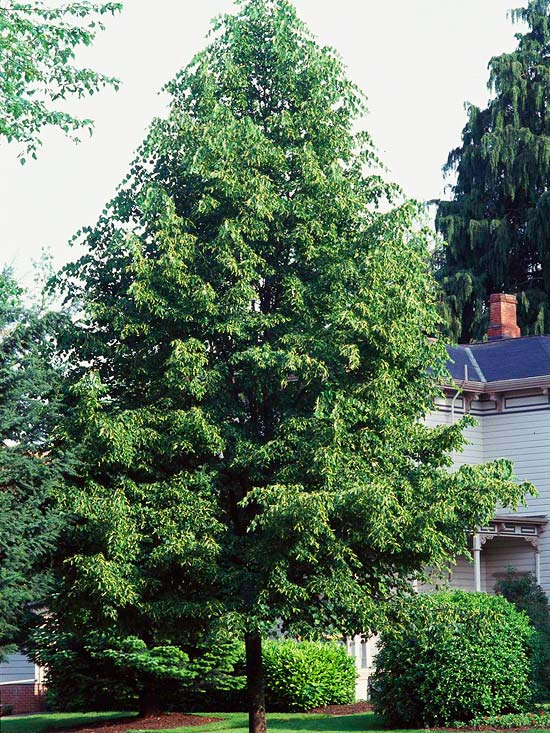 Littleleaf linden
Littleleaf linden
A small tree is not always a young tree. If it's small from lack of vigor, the condition of its bark will give it away. A weak one will have thicker bark that's textured with ridges, furrows, or flakes, rather than the smooth, tender bark of youth.
Certain trees are more tolerant of typical urban conditions, such as atmospheric pollutants from industry and cars, compacted soil, poor drainage, night lighting, and salt spray from snow plows. Typically, city trees have much shorter lifespans than their suburban or country counterparts. Those that do best are Norway maple, oak, Washington hawthorn, ginkgo, honey locust, sweet gum, crabapple, linden, and zelkova.
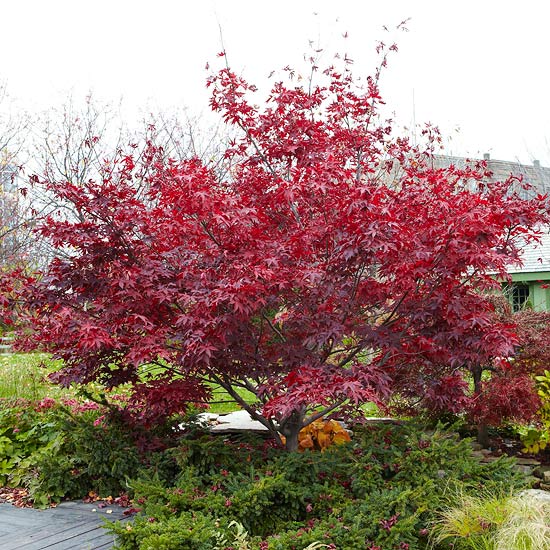 Japanese maple.
Japanese maple.
Japanese maples (Acer palmatum) grow 3 to 20 feet tall and offer fine-texture foliage, rich color, interesting shapes, and a tolerance for some shade. Use them to adorn beds, pools, and lawns. Zones 5-8.
Our favorite Japanese maple varieties.
Learn more about Japanese maples.
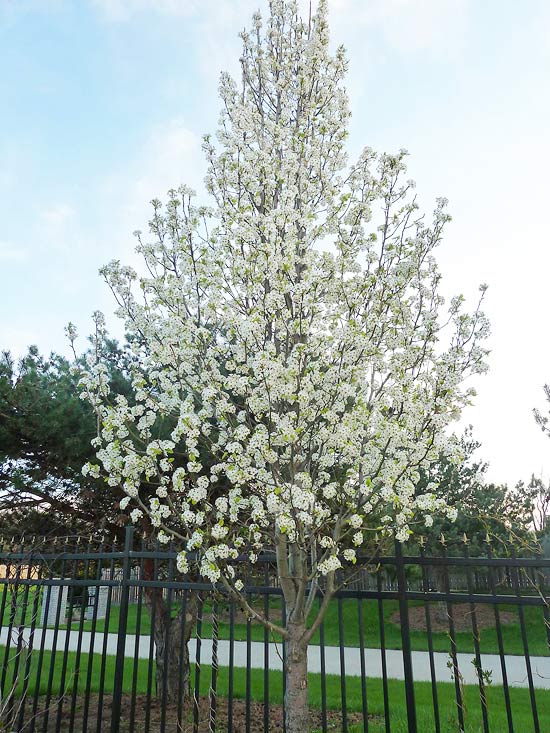 Callery pear.
Callery pear.
Callery pear (Pyrus calleryana) is fast-growing and has small, white flowers in the spring and colorful foliage in the fall. Its pyramidal canopy reaches 30 to 45 feet at maturity. Early versions called Bradford tend to split in storms, so choose 'Aristocrat' or 'Chanticleer.' Zones 5-8.
Learn more about ornamental pear trees.
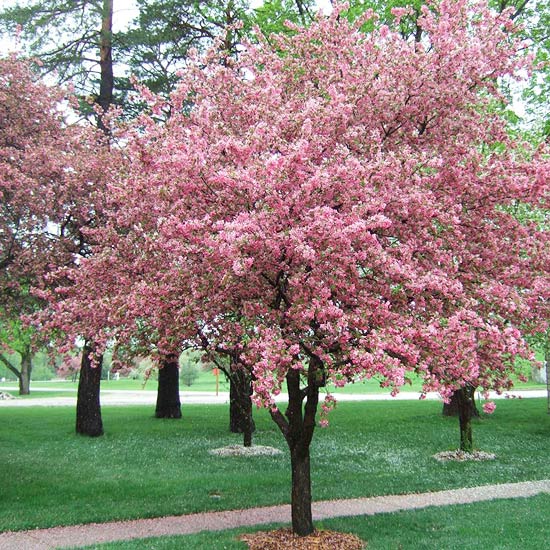 Crabapple.
Crabapple.
Crabapple (Malus) grows 15 to 25 feet tall and is covered in spring with deep pink flower buds that become white blossoms. In turn, the flowers give way to small red or yellow apples that birds love. The tree spreads to an irregular shape. Zones 3-8.
The best crabapples for your yard.
Learn more about crabapples.
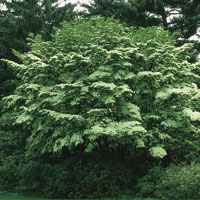 Chinese dogwood.
Chinese dogwood.
Chinese dogwood (Cornus kousa chinensis) has white spring flowers with pointed petals. Dangling, fleshy red fruits hang from its distinctly horizontal branches in fall. Zones 3-8.
Learn more about flowering dogwoods.
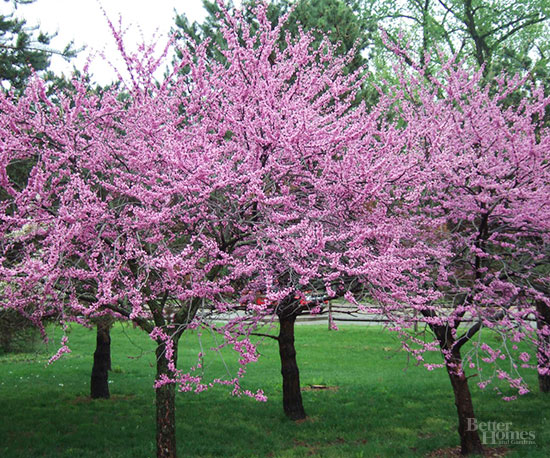 Redbud.
Redbud.
Redbud (Cercis canadensis) bears tiny pinkish-purple flowers along its stems and bare branches in early spring. They give way to rows of wide heart-shape leaves. Pods become visible as leaves turn yellow in fall. Mature trees grow 25 to 30 feet tall. Zones 5-9.
Learn more about redbuds.
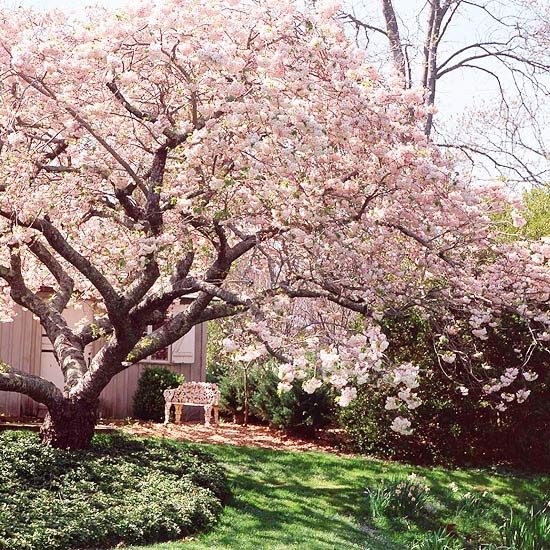 Saucer magnolia.
Saucer magnolia.
Saucer magnolia (Magnolia soulangeana) is deciduous and grows up to 30 feet tall. It bears 6-inch-long, pale pink flowers early in spring. Zone 5-9.
Learn more about magnolias.
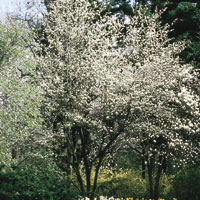 Serviceberry.
Serviceberry.
Serviceberry (Amelanchier) is a tough and adaptable large shrub or small tree at 6 to 20 feet tall. Its early-spring clouds of white flowers become edible dark fruits by June. Yellowish-pink fall foliage entertains in a woodland setting or near a patio. Zones 2-9.
Learn more about serviceberries.
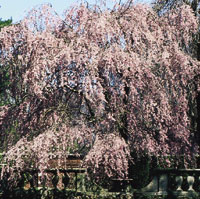 Weeping cherry.
Weeping cherry.
Weeping cherry (Prunus) varieties typically grow 15 to 25 feet tall and spread as wide. They bear a blizzard of single or double flowers in pink or white. Zones 5-8.
Learn more about flowering cherry trees.
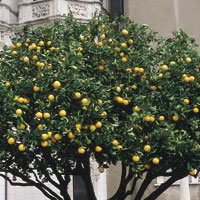 Citrus trees.
Citrus trees.
Citrus (Citrus) trees bear lovely, fragrant, white flowers and edible fruits. These small trees easily deteriorate not sprayed properly. Zones 8-11.
Citrus trees you can grow.
Learn more about lime trees.
Learn more about orange trees.
Learn more about lemon trees.
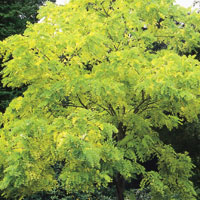 Honey locust.
Honey locust.
Honey locust is tough and adaptable, grows 30 to 50 feet tall, and drops pods. Its foliage turns yellow in fall. Choose the thornless variety. Zones 3-9.
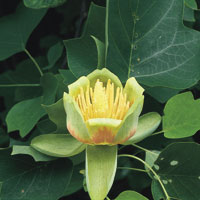 Tulip tree.
Tulip tree.
Tulip tree (Liriodendron tulipfera) grows quickly to its 25-foot height. Beautiful tulip flowers with orange centers snuggle among interesting leaves. Zone 5-9.
Learn more about tulip trees.
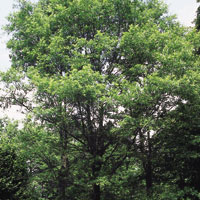 Willow oak.
Willow oak.
Willow oak (Quercus phellos) has narrow and pointed foliage, and forms a fine-texture, dense conical canopy, rising to about 50 feet at maturity. It makes a good street and shade tree and is easy to transplant. Foliage turns yellow before it drops in the fall. Zones 6-9.
Learn more about oaks.
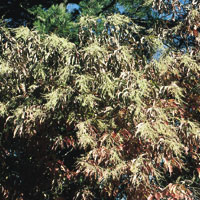 Sorrel.
Sorrel.
Sorrel, or sourwood (Oxydendrum arboreum), grows to 75 feet tall and is a multiseason beauty. Its July flowers are drooping strands of tiny white urns among slightly leathery and glossy, medium green leaves that turn to a brilliant red early in the fall. Zones 5-9.
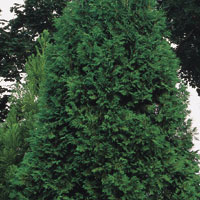 Arborvitae.
Arborvitae.
Arborvitae (Thuja) grows to a narrow, conical 40 to 50 feet tall. It begins with a slender shape, then turns spirelike upon maturity. Many varieties exist that grow in various heights and widths. Zones 2-7.
Learn more about arborvitae.
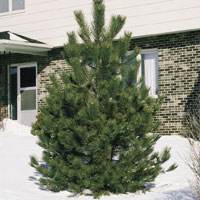 Pine.
Pine.
Pine (Pinus) foliage is evergreen for year-round beauty and is composed of bundles of soft, long needles. Though some pines are a bit brittle in harsh weather, they're often used for wind and privacy screening. Hardy in various zones, depending on the variety of tree.
Learn more about pines.
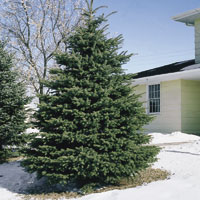 Spruce.
Spruce.
Spruce (Picea) trees are fragrant needled evergreens -- perhaps the ultimate Christmas tree. They range in height from dwarfs less than 5 feet tall to giants that tower more than 100 feet high. Depending on variety, the hardiness range extends as cold as Zone 3.
The best conifers for your yard.
Use evergreens to make an impact.
Learn more about spruce.
Copyright © www.100flowers.win Botanic Garden All Rights Reserved